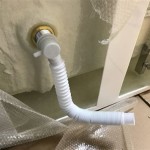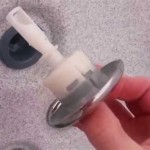Caulking Around Bathtub: Essential Aspects to Consider
Caulking around bathtubs is a crucial task that ensures a watertight seal and prevents moisture damage. Here are some essential aspects to consider when caulking around bathtubs:
1. Surface Preparation
Before applying caulk, ensure the surfaces around the bathtub are clean and dry. Remove any old caulk, mildew, or dirt using a caulk removal tool or a cleaning solution. This will create a strong bond between the caulk and the surfaces.
2. Caulk Selection
Choose a caulk specifically designed for bathroom use, such as silicone or acrylic latex caulk. Silicone caulk is highly water-resistant and long-lasting, while acrylic latex caulk is easier to apply and paintable. Select a caulk color that matches or complements the bathtub and bathroom décor.
3. Application Technique
Apply the caulk evenly and smoothly along the joint between the bathtub and the wall or surround. Use a caulk gun for precise application and ensure the bead is approximately 1/4 inch thick. Use your finger or a caulk tool to smooth the caulk and remove any excess.
4. Curing Time
Allow the caulk to cure completely before using the bathtub. Refer to the manufacturer's instructions for the specific curing time, which typically ranges from 24 to 48 hours. Avoid using the bathtub until the caulk has fully hardened.
5. Maintenance
Regularly inspect the caulk around the bathtub for any signs of wear or damage. If the caulk becomes cracked, discolored, or moldy, it should be replaced promptly to prevent water leakage and ensure a watertight seal. Use a caulk remover and apply new caulk as needed.
By following these essential aspects, you can effectively caulk around your bathtub, ensuring a watertight seal that will protect your bathroom from moisture damage and enhance its aesthetic appeal.

How To Caulk A Bathtub On Sutton Place

How To Caulk A Bathtub 13 Steps With Pictures Wikihow

Caulking A Bathtub Simple Steps For Successful Seal

How To Caulk A Shower Or Tub True Value

How To Caulk A Bathtub On Sutton Place

Don T Caulk Here

How To Re Caulk A Bathtub

How To Use Bathroom Caulk For A Fresh New Seal

How To Caulk A Bathtub Like Pro

Tips For Caulking Your Shower Enclosure
Related Posts








